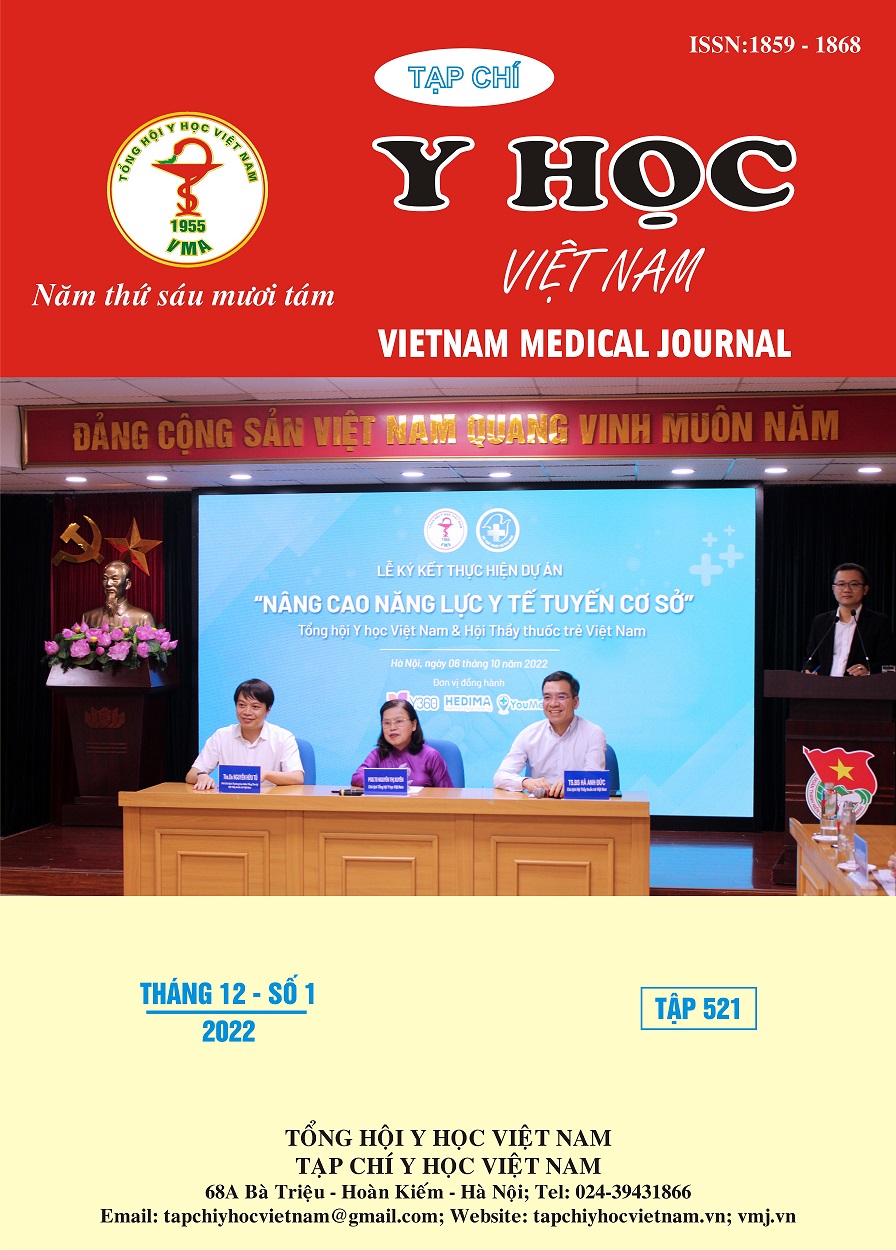THE OUTCOME IN PEDIATRIC ANAPHYLAXIS AT THE PEDIATRIC INTENSIVE CARE UNIT - VIETNAM NATIONAL CHILDREN'S HOSPITAL
Main Article Content
Abstract
Background: Anaphylactic shock is a severe allergic condition that can be life-threatening if it is not diagnosed and treated promptly. This study aimed to evaluate the outcome of anaphylaxis in children at the Pediatric Intensive Care Unit, Vietnam National Children's Hospital. Methods: This was a retrospective study carried out from 1/1/2016 to 1/7/2021. One hundred ten patients who suffered anaphylaxis admitted to the PICU were enrolled. Results: Grade III Anaphylaxis occurred in 92.7% of cases, and no cases of grade I and II anaphylaxis were found. All of patients were given intramuscular injections of epinephrine before admission to the PICU. The proportion of patients who had received the correct treatment was 44.5%. In addition, 76.5% of this group did not respond to the second dosage of IM epinephrine, and 51.8% of those who did not respond to repeat dose required a further treatment with the combination of adrenalin with other vasopressors or inotropes. The survival rate is 95.5%, and the death rate is 4.5%. The rate of sequelae is 1.8%. The length of stay in the Pediatric Intensive Care Unit is seven days, with the need for mechanical ventilation lasting up to 24 hours. Conclusion: Almost all of the patients admitted to the Pediatric Intensive Care Unit were grade III anaphylaxis, high rate of this group failed to repeat IM adrenalin and needed to combine adrenalin with other vasopressors or inotropes. The survival rate was 95.5%, of which 1.8% of patients had sequelae.
Article Details
Keywords
Anaphylactic shock, adrenalin
References
2. Nguyễn Đạt Anh, Nguyễn Văn Đĩnh. (2014). Cập nhật 2014 chẩn đoán và xử trí sốc phản vệ, Hội hồi sức cấp cứu và chống độc Việt Nam.
3. Bộ Y tế 2017. Thông tư 51: Hướng dẫn phòng, chẩn đoán và xử trí phản vệ.
4. Trần Bá Dũng. Nhận xét chẩn đoán và điều trị sốc phản vệ tại khoa Điều trị tích cực Bệnh viện Nhi Trung ương. Báo cáo Hội nghị khoa học Hồi sức cấp cứu Nhi khoa lần III. 2018.
5. Phạm Văn Thắng. Nhận xét đặc điểm lâm sàng và điều trị sốc phản vệ do thuốc ở trẻ em tại Bệnh viện Nhi Trung ương. Đề tài nghiên cứu khoa học tại khoa Điều trị tích cực Bệnh viện Nhi Trung ương. 2010, 6 (5), 9.
6. Nguyễn Xuân Quốc, Phạm Văn Quang, Tăng Chí Thượng. Đặc điểm dịch tễ, lâm sàng bệnh nhi sốc phản vệ tại bệnh viện Nhi đồng 1. Tạp chí nhi khoa. 2017, 10 (3), 36-43.
7. Campbell RL, Bellolio MF, Knutson BD, Bellamkonda VR, Fedko MG, Nestler DM, et al. Epinephrine in anaphylaxis: higher risk of cardiovascular complications and overdose after administration of intravenous bolus epinephrine compared with intramuscular epinephrine. J Allergy Clin Immunol Pract. 2015, 3 (1), 76-80.


